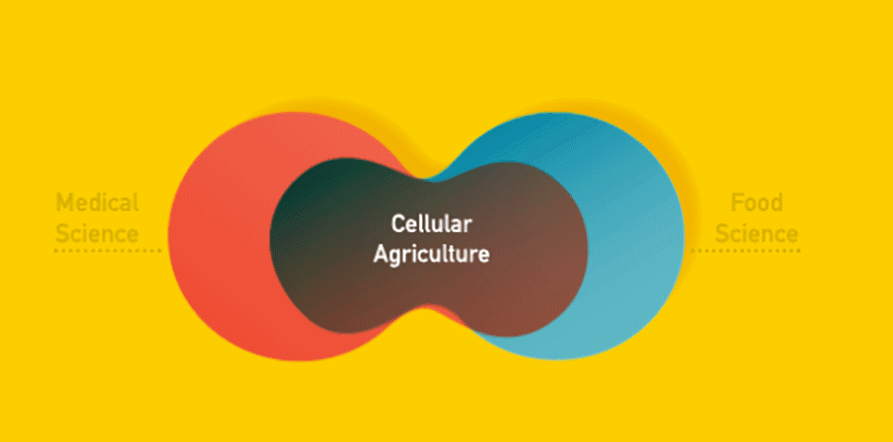
Guilt-free Dining
As many as are the reasons people choose a plant-based diet—animal rights advocacy, environmentalism—vegetarians and vegans find a number of reasons for traditional food alternatives.
“The way I see it, the meat on my plate is just a collection of tissues, and there are two ways of getting tissues,” says Isha Datar, CEO of New Harvest. “One is to grow a whole organism and the other is to grow just a part from the smallest living thing: cells. The second option doesn’t require an animal to suffer and produce waste.”
Specializing in cellular agriculture, Datar’s company is continuously developing new sustainable technologies to address food insecurity—all without using any animals or animal byproducts.
And what they’re doing may revolutionize the world’s food economy.
Hen-less Eggs? Cow-less Milk? But How?

A floating, bi-lobed object with “Cellular Agriculture” inscribed on it. Credit: New Harvest
Because of cellular agriculture’s use of tissue engineering and cell culture, it’s often described as the meeting of medical science and food science.
In fact, the process used by New Harvest to create animal-free food shares a lot in common with growing tissue for an organ transplant.
Using a starter culture—which is made by isolating the gene for the protein and inserting it into a microbe—scientists can create both acellular (e.g., casein, gelatin, omega-3 fatty acids) and cellular products (e.g., fur, leather, meat).
To make milk, for example, yeast is altered by inserting the gene of a milk protein called casein into it. Because all cells read the same genetic code, the yeast starts to produce casein that’s exactly the same as the one cows make.
These products can also be further redesigned to produce meat with less saturated fats, milk without lactose, and eggs without cholesterol.
“Animal culture right now is extremely detrimental to animals, human health and the environment,” says Datar. “We need to start thinking about ways in which we can decrease our dependency on it.”
